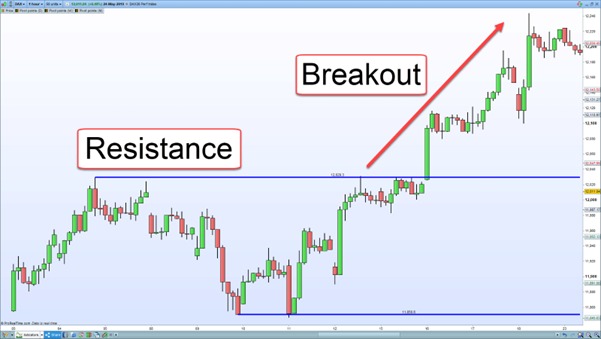Intraday Trading vs. Option Trading: A Detailed Comparison
The financial markets offer a vast array of opportunities for investors and traders. Two popular choices are intraday trading and option trading. Both involve actively managing positions to capitalize on market movements, but they differ significantly in approach, risk profile, and potential rewards. This comprehensive guide dives deep into intraday trading vs. option trading, equipping you with the knowledge to make informed decisions for your financial journey.

Understanding Intraday Trading
Intraday trading, also known as day trading, involves buying and selling securities within a single trading day. The goal is to profit from short-term price fluctuations, closing all positions before the market closes.
Key characteristics of intraday trading:
Time horizon: Short-term, typically minutes to hours.
Focus: Capitalizing on intraday volatility and price movements.
Strategies: Day traders employ various technical analysis techniques to identify entry and exit points, such as chart patterns, technical indicators, and market sentiment. Popular strategies include scalping, day trading ranges, and trend trading.
Capital requirements: While the minimum capital to start can be relatively low, success often hinges on larger account sizes to exploit opportunities and manage risk effectively.
Risk profile: High risk due to the dynamic nature of intraday price movements. Frequent trading also incurs commissions and fees.
Benefits of intraday trading:
Potential for high profits: Skilled intraday traders can capture significant gains by exploiting short-term market inefficiencies.
Liquidity: Many popular stocks and assets offer high liquidity, allowing for easy entry and exit from positions.
Active management: Intraday trading appeals to those who enjoy active market participation and the thrill of short-term gains.
Challenges of intraday trading:
High risk: The fast-paced nature of intraday trading amplifies the risk of losses. Emotional decision-making can be detrimental.
Demanding: Successful intraday trading requires significant time commitment, discipline, and a strong understanding of technical analysis.
Technology dependence: Reliable trading platforms, real-time data feeds, and fast internet connectivity are crucial for effective intraday trading.
Demystifying Option Trading
Option trading involves contracts that grant the buyer the right, but not the obligation, to buy (call option) or sell (put option) an underlying asset (stock, index, commodity) at a predetermined price (strike price) by a specific expiry date. Options offer a versatile tool for speculation, income generation, and hedging strategies.
Key characteristics of option trading:
Time horizon: Options can range from short-term (weekly) to long-term (months or even years).
Focus: Options provide leverage and allow for directional bets (calls for price increases, puts for price decreases), income generation through selling options (covered calls, cash-secured puts), or hedging existing portfolios.
Strategies: Option traders employ various strategies based on their objectives. Common strategies include buying calls for bullish bets, buying puts for bearish bets, selling covered calls for income, and using options to hedge other holdings.
Capital requirements: The upfront cost of options (option premium) is typically lower than buying the underlying asset, making it accessible to a wider range of investors.
Risk profile: Options offer a spectrum of risk profiles depending on the strategy employed. Buying options carries limited risk (capped to the premium paid), while selling options exposes the seller to potentially unlimited losses if the underlying asset moves significantly against their direction.
Benefits of option trading:
Leverage: Options offer the potential for amplified returns on a relatively smaller investment compared to buying the underlying asset outright.
Versatility: Options provide a variety of strategies to suit different market conditions and investor goals.
Limited risk: Buying options limits potential losses to the premium paid.
Hedging: Options can be used effectively to hedge existing portfolios against potential downturns.
Challenges of option trading:
Understanding options: Options have complexities that require thorough understanding before engaging in this type of trading.
Time decay: Option prices erode over time (time decay), impacting profitability, especially for short-term options.
Implied volatility: Option pricing is influenced by implied volatility, making it challenging to accurately predict future value.
Choosing Between Intraday Trading and Option Trading: A Framework
The choice between intraday trading and option trading depends on your individual financial goals, risk tolerance, and available capital.
Here’s a framework to consider:
Risk tolerance: Intraday trading carries a higher risk profile due to frequent trading and potential emotional response to short-term volatility. Option buying offers limited risk, while option selling exposes you to potentially unlimited losses. Choose the approach that aligns with your comfort level.
Time commitment: Intraday trading demands significant time commitment to monitor markets

